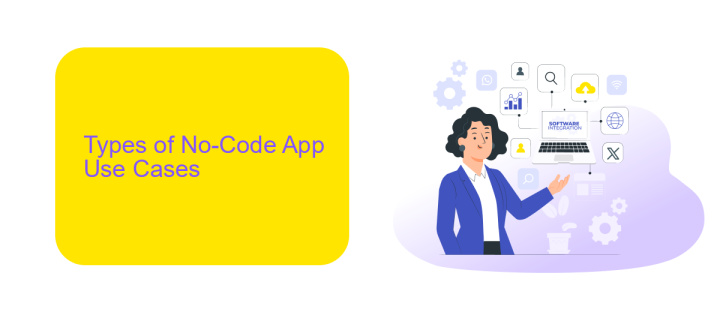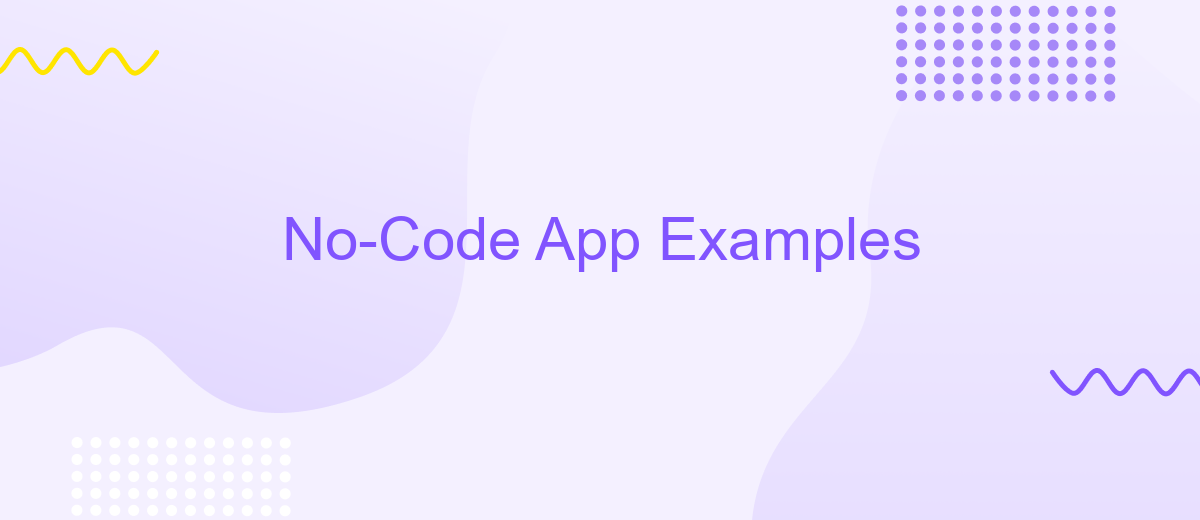No-Code App Examples
In today's fast-paced digital landscape, no-code platforms are revolutionizing the way we build applications. By eliminating the need for traditional coding skills, these tools empower individuals and businesses to create robust, functional apps quickly and efficiently. In this article, we'll explore some impressive examples of no-code apps that demonstrate the versatility and potential of this innovative approach.
Introduction: Defining No-Code Apps
No-code apps are revolutionizing the way we approach software development by enabling individuals without programming skills to create functional applications. These platforms provide an intuitive interface where users can drag and drop elements to build apps, eliminating the need for traditional coding knowledge.
- Ease of use: No-code platforms are designed for simplicity, allowing anyone to create apps quickly.
- Cost-effective: Reduces the need for hiring expensive developers.
- Speed: Rapidly prototype and deploy applications.
- Flexibility: Easily make changes and updates to the app.
One of the key advantages of no-code apps is the ability to integrate various services seamlessly. Tools like ApiX-Drive facilitate these integrations by enabling users to connect different applications and automate workflows without writing any code. This makes it easier to manage data and processes across multiple platforms, enhancing overall productivity and efficiency.
Types of No-Code App Use Cases

No-code platforms have revolutionized how businesses approach app development by providing versatile use cases across various industries. One common use case is internal tools and dashboards, which allow companies to streamline operations and improve productivity without needing a dedicated development team. For instance, HR departments can create employee management systems, while sales teams can build custom CRM solutions tailored to their specific needs, all without writing a single line of code.
Another prevalent use case is the automation of workflows and integrations. Businesses can use no-code platforms to connect different software applications and automate routine tasks, significantly reducing manual effort and errors. Services like ApiX-Drive enable users to easily set up integrations between various apps, ensuring seamless data flow and enhanced operational efficiency. This is particularly beneficial for small to medium-sized enterprises that may not have the resources to invest in complex IT solutions but still require robust automation capabilities.
Examples of Real-World No-Code App Solutions

No-code app solutions have revolutionized the way individuals and businesses develop and deploy applications. These platforms empower users with little to no programming knowledge to create functional and scalable applications quickly and efficiently.
- E-commerce Platforms: Tools like Shopify allow users to set up online stores without writing a single line of code. Features include customizable templates, payment gateways, and inventory management.
- Website Builders: Wix and Squarespace enable users to design and launch professional websites with drag-and-drop functionality, offering a variety of templates and integrations.
- Workflow Automation: Tools like ApiX-Drive facilitate the integration of various services and automate workflows, allowing businesses to connect apps and streamline processes without manual coding.
- Internal Tools: Platforms like Airtable and Notion help teams create custom databases and project management tools tailored to their specific needs.
These examples illustrate how no-code solutions are democratizing app development, making it accessible to a broader audience. As technology continues to evolve, the potential for no-code platforms to drive innovation and efficiency in various industries will only grow.
Benefits and Limitations of No-Code App Development

No-code app development offers numerous benefits, making it an attractive option for businesses and individuals alike. Firstly, it significantly reduces development time, allowing users to create functional applications in a matter of hours or days instead of weeks or months. Secondly, it lowers costs as there is no need to hire expensive developers or invest in extensive training programs. Additionally, it empowers non-technical users to bring their ideas to life without learning complex programming languages.
However, no-code platforms also come with certain limitations that should be considered. While they are highly versatile, they may not be suitable for highly complex or specialized applications that require custom coding. Furthermore, users may encounter scalability issues as their app grows and attracts more users.
- Reduced development time
- Lower costs
- Empowers non-technical users
- Potential scalability issues
- Limited suitability for complex applications
To address some of these limitations, integrating with other services can be beneficial. For example, ApiX-Drive allows seamless integration of various applications, enabling users to automate workflows and enhance functionality without extensive coding. This can help mitigate some of the scalability and complexity issues associated with no-code platforms.


The Future of No-Code App Development
The future of no-code app development looks incredibly promising as it continues to democratize technology, making it accessible to individuals without traditional programming skills. With advancements in AI and machine learning, no-code platforms are becoming more intuitive and powerful, enabling users to create complex applications effortlessly. This trend is expected to grow, with more businesses adopting no-code solutions to accelerate their digital transformation and reduce development costs.
Another exciting aspect of the future is the seamless integration capabilities provided by services like ApiX-Drive. These platforms simplify the process of connecting various applications and automating workflows, allowing users to focus on innovation rather than technicalities. As no-code tools evolve, the integration of such services will become even more streamlined, further enhancing the efficiency and functionality of no-code applications. This evolution will undoubtedly lead to a more interconnected and efficient digital ecosystem, empowering users to bring their ideas to life faster than ever before.
FAQ
What is a No-Code app?
Can I build a complex app using No-Code tools?
What are some examples of No-Code apps?
How can I integrate my No-Code app with other services?
Is it possible to scale a No-Code app?
Apix-Drive is a universal tool that will quickly streamline any workflow, freeing you from routine and possible financial losses. Try ApiX-Drive in action and see how useful it is for you personally. In the meantime, when you are setting up connections between systems, think about where you are investing your free time, because now you will have much more of it.

